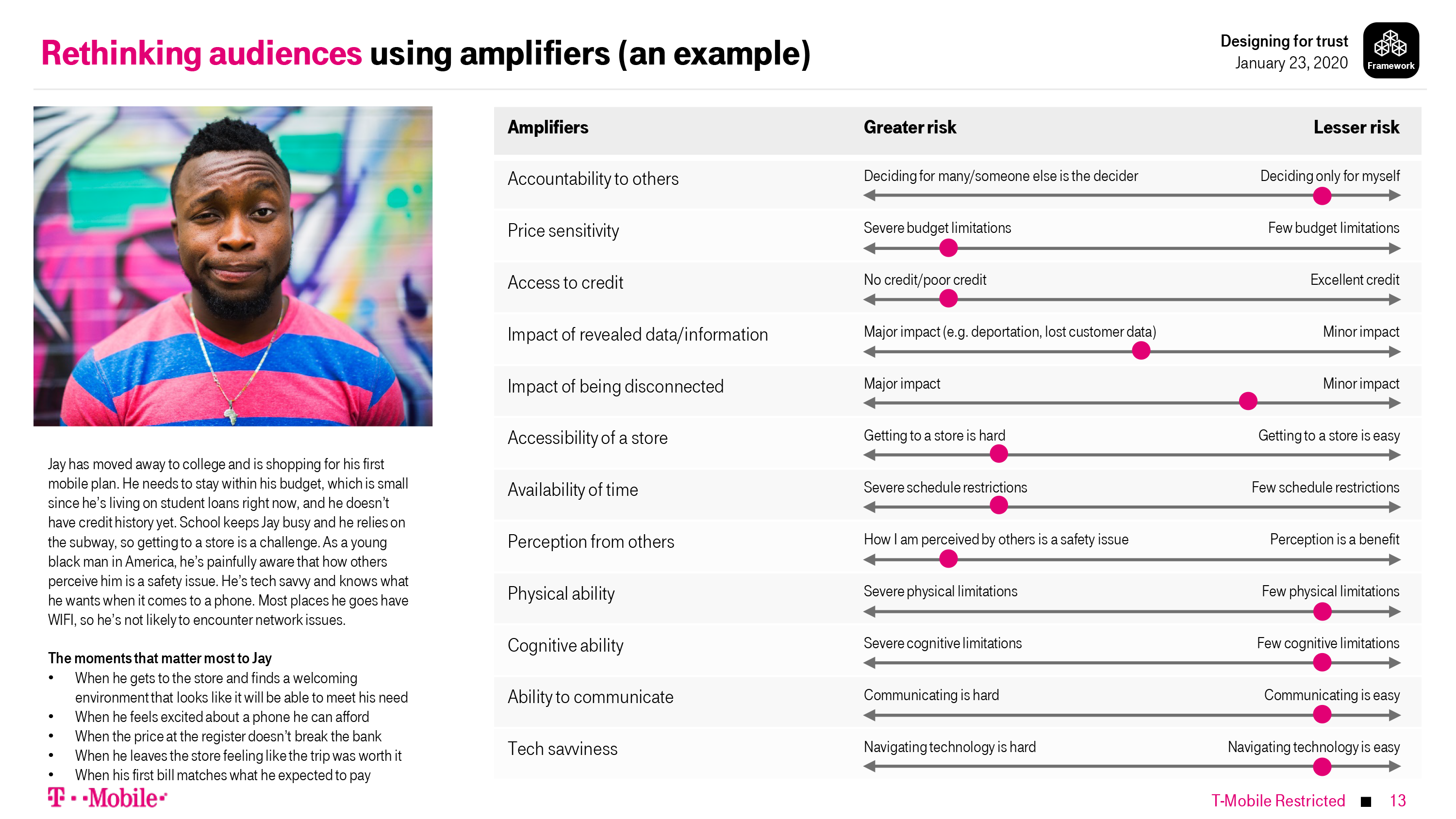A bad habit of businesses is thinking of their customers strictly in terms of the product being sold to them. Customers aren't defined by the things they purchase, they purchase things to help solve their problems. Re-centering human needs at the core of our design work helps us get past assumptions of products based in features and move towards what matters most.
The key theoretical construct of this approach uses 'Amplifiers' as a concept to define what is most important for the kinds of people we might be designing for. These consist of aspects of their lives in which interaction with the problem space holds special risk. This list is a first attempt at outlining those major aspects, but will change and grow over time as we learn through iterative design.
Understanding our audience within a given problem space in terms of these Amplifiers allows us to use inclusive design principles to do the most good for the most people by focusing on those who have the greatest risk.








